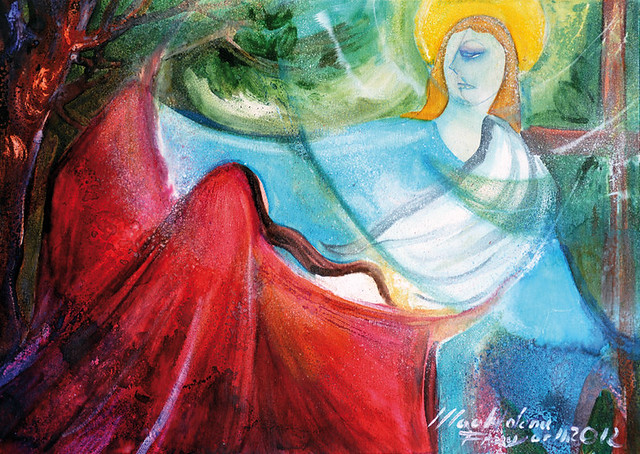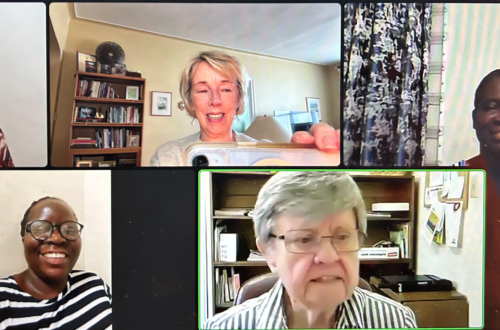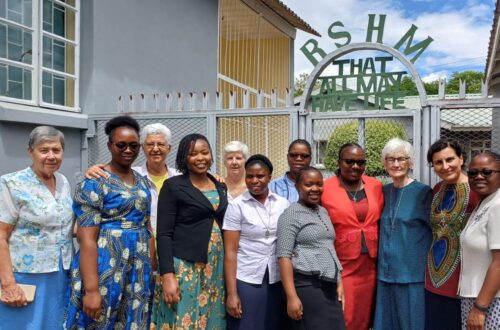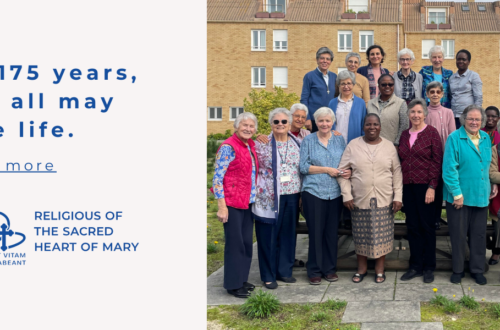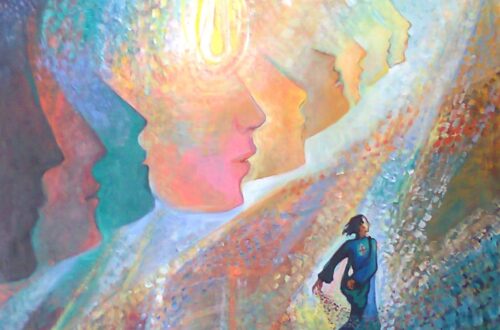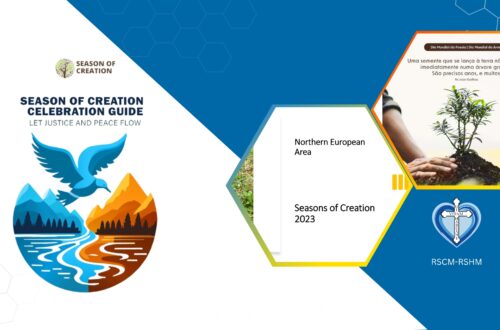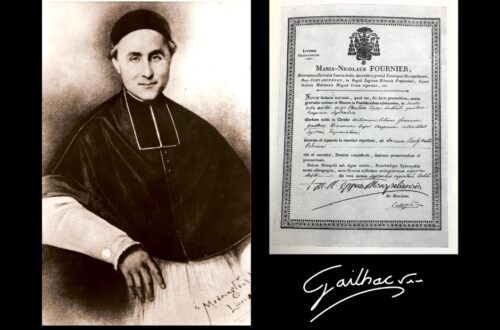Heritage and Spirituality
Catherine Dolan and Ana Luísa Pinto, RSHM
According to John’s Gospel (John 20: 11-18), Mary Magdalene comes in her grief and loss to the tomb, sees it empty, draws her conclusions and is faced with an even deeper sense of loss. The angels ask her why she is weeping. Strange question in the circumstances, but perhaps it is to rouse her from grief to reflection on what was happening, what was she actually weeping for. The question and her response that she did not know where they had laid her Lord made her realise that there was no point in continuing to look into the tomb, but to look around her, to look outward to see if she could find where he was.
When Mary turned from the tomb she saw Jesus standing there but she did not know that it was Jesus. For one thing of course, she was not looking for a live Jesus, but a dead one. So, not recognising Jesus, she continued to weep. Even when he spoke to her she didn’t recognise him but asked his help thinking he was the gardener. When Jesus addressed her by name, she turned to him again, recognising him and, filled with joy, embraces him. He tells her not to hold on to him but to go, to take his message to the disciples, and to share with them the fact that he has risen. So Mary went and shared the good news.
This is a resurrection story which recurs constantly in our lives – the recognition of the presence of Christ in situations of darkness and death. In our journey, each of us has been faced with situations, perhaps of loss, of conflict, of frustration and anger, and we can become so upset that all we can see is the situation. As with Mary, we need to be able to reflect on what is happening, and why we feel as we do, so that we are not sucked in by our feelings but able to look outwards to what we are being called to.
In such situations we have the help of dynamic themes or characteristics which have been handed down to us from our Founder Jean Gailhac and founding sisters. Gailhac very often emphasised the importance of docility to the Holy Spirit in his letters to the sisters: “Fill yourself more and more with the Spirit of God; let yourself be guided in all things by his inspirations… May the Spirit of our Lord continue to direct your life…” (GS/22/X/78/A*) We see this so affecting his own life and that of the early community that often very important stages in our Institute history have come about, not through planning but through openness to the Spirit in events of the present moment. One of our characteristics as RSHM should be the ability to reflect on what is really happening, to be open to the action of the Spirit in a given situation.
Then to Mary’s intent on finding her Lord, we can relate Gailhac’s emphasis on the centrality of Jesus Christ in our lives. In effect, Gailhac places the deep foundations of the Institute in Jesus Christ. Again and again, he reminds us of our call: it is not enough to study Jesus Christ, it is not enough to follow or even love him; it is necessary to be one with the living Jesus Christ in the present, to be transformed in him, to take on the interior dispositions of the living Christ. Transformation into Jesus Christ is central to Gailhac’s vision and to our spirituality: “To form Jesus Christ fully in you, to live for him, to be another Jesus Christ; this is the end of your journey and the crown of your work.” (Ecrits, vol. 11, p. 3651). As RSHM we are called to integrate our lives centering them on Christ whose love in us is the source of our faith and zeal. (Const. 9) It is in Christ, being one with him, that we witness to his mission of “making God known and loved”. Our Constitutions express it as total commitment to follow Christ, to personal transformation in him and to transformation of the world. (Const. 2)
Mary Magdalene’s ability to recognise Jesus in the gardener, to believe that this apparently different person was he, called for a spirit of faith, which is so essential to our lives and which helps us to recognise the presence of God in, to all appearances, the most unlikely people and events. Jesus Christ present in the here and now is central to Gailhac’s vision. It was through being turned toward God, as Gailhac so often put it and through his trust in God’s presence, that the young sisters of our early history were enabled to do things we are in awe of these days, such as travelling to countries and even new continents to establish communities where we had never been before and where all was strange and unknown to them.
It is at resurrection moments like this that we experience the truth of what Gailhac wrote to Mother Saint Jean at the time of the founding of the Institute when the sisters were experiencing rejection and great anxiety: “God is with us and therefore so is the Cross… God and Mary will give you the courage you need. God will be your support.” (GS/23/II/49/A*) The clearest facet of Christ in the first communities of the RSHM is precisely the paschal mystery – the death and resurrection of the living Christ. The meaning that Gailhac gives to participation in the paschal mystery of Christ is similar to that which Paul refers to in his letter to the Philippians: “…that I may know him and the power of his resurrection, and may share his sufferings, becoming like him in his death, that by any means possible I may attain the resurrection from the dead” (Philippians 3: 10-11). Looking at the journey of our history as an Institute, we realize that the sisters and the communities have faced various situations of the Cross, never desired or sought after. Rather, the paschal mystery was present in reality, and was recognized by the sisters as a sign of Christ’s presence among them. It almost became an expected part of their/our life.
Jesus’ sending Mary Magdalene to the other disciples makes it clear that she is to share the news of the resurrection with others, to share the news of life in abundance. It reminds us of Gailhac’s insistence that we are to continue the work of Christ. In one of his letters he puts it: “God has called (the sisters) to represent him, to continue his work”. And this is what we are called today. In the words of our Vision Statement (2019 GC Doc.), “We are called to listen to the heartbeat of Jesus Christ, whom we encounter personally and as community in every dimension of our lives, and to be women of passion and compassion, impelled to go out to announce the Good News. We collaborate with others as we journey together – women of prophetic hope who proclaim that all have a place in our ‘common home’.”
